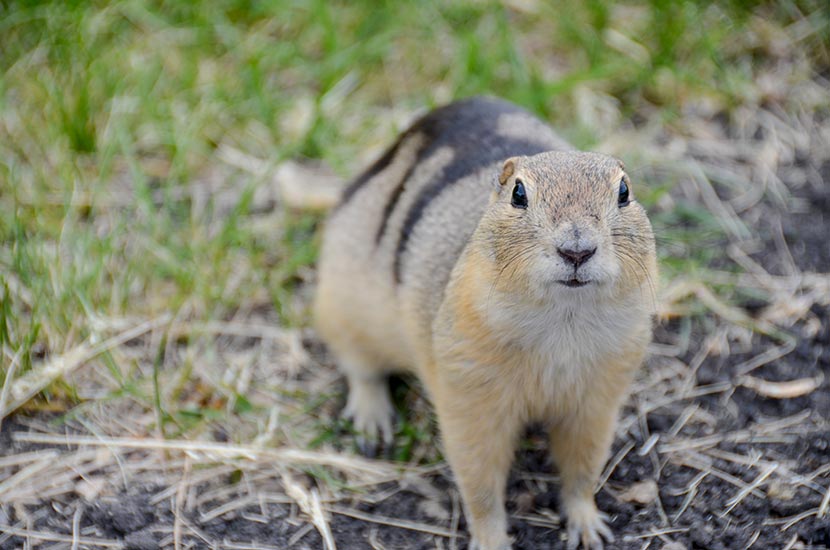By Kristin Claricoates, DVM
There are 5 species of prairie dogs, and the black tailed prairie dogs are the best known species. Prairie dogs typically have a lifespan of 8-10 years in the wild, although in captivity they often do not live this long. The shorter lifespan is contributed to issues with their enclosure and diet. Males typically are larger than females in weight and prairie dogs typically weigh up to 0.7kg-1.4kg or 1.54lbs-3.08lbs. Prairie dogs reach sexual maturity at 2-3 years of age, and females will have 1 litter a year. Typically there are 3-4 pups in each litter and the gestation period is 33-38 days. Mating season is in March and lasts about 2-3 weeks. 98% population decline is seen in the 20th century.
In an enclosure, they prefer the temperature to be 68-72° F and humidity between 30 and 70%. In the wild, they live in coteries, which is a basic social group of 8-10 animals. These typically consist of 1 male, 3-4 females, several yearlings and juveniles. Each prairie dog typically has 11 distinct vocalizations which owners will come to know over time. Two to know particularly are the chattering that expresses frustration and a high pitched scream that indicates distress. An owner must handle and socialize with their prairie dog often or else they will become prone to biting and become more aggressive over time.
In their environment in the wild, they have underground tunnels. So in your house, offer a deep amount of bedding to allow for digging tunnels and use PVC pipes to allow them to feel like they are underground. Do not use any wood in the cage as they will chew it down and escape. The enclosure itself is ok to be made from wire and stainless steel. A cage should not be all solid walls, but a cage with 3 solid sides and one wire side helps cut down self-trauma from biting on the sides of the wired cage. Also, there should not be any shelves or climbing areas as they do not climb well. Prairie dogs should have a photoperiod (amount of light in the day) of 10-12 hours.
The diet of a wild prairie dog consists of grasses, leaves, herbs, insects and carrion. At home, please offer free feeding of timothy hay, 20-40g of hay per each kilogram of weight of your pet of timothy hay-based pellets and offer a small amount of greens and veggies.
Some diseases that prairie dogs uncommonly get but are imperative to know are the zoonotic diseases that have the potential to spreading to other animals or humans through a pet prairie dog. These are monkey pox and Yersinia pestis (the bubonic plague). Do not assume that these diseases are present in your prairie dog, however large lumps or lesions on the body that are discolored will be of concern for either disease.
For a routine prairie dog examination, we will use a gas anesthetic to do our examination. We check for any intestinal parasites, topical parasites, and dental diseases such as malocclusions, tooth abscesses, or odontomas (a nodular mass in the hard palate resulting in poor breathing secondary to poor dental health). We also like to do routine workup such as a fecal and bloodwork. If needed, we may do additional diagnostic tests like a radiograph (x-ray) if needed.

